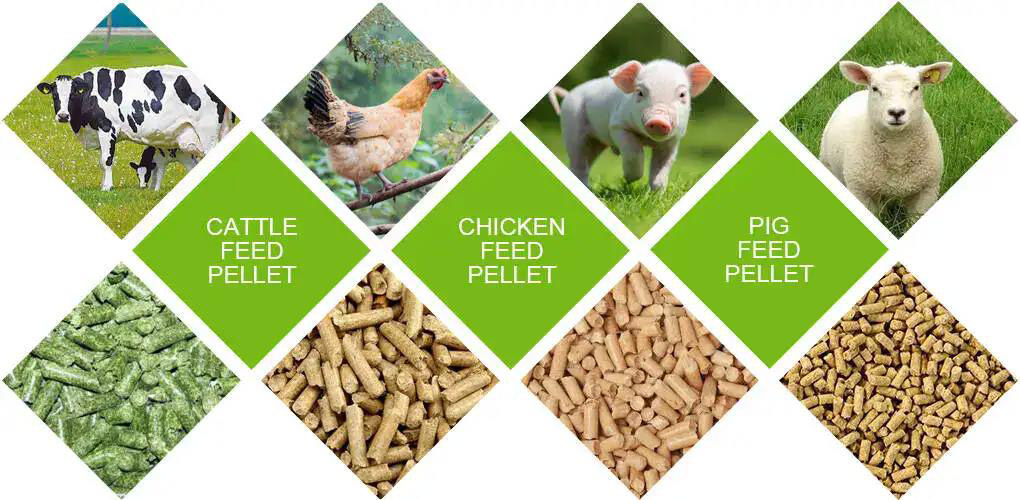small feed mill plant
A small feed mill plant is a factory with a relatively small production capacity, specializing in the production and processing of animal feed.
small feed mill plant Introduction
A small feed mill plant is a factory with a relatively small production capacity, specializing in the production and processing of animal feed. Compared to large-scale feed mills, small-scale feed mills typically have lower production volumes and simpler equipment and production lines, but they are still capable of meeting the feed demands within a certain range. These feed mills usually serve small-scale farms, family farms, and rural households, providing them with feed products that meet the nutritional needs of animals. While providing basic feed production services, small-scale feed mills also support and promote local economic development and livestock farming.


Characteristics of small feed mill plant
Small Scale
small feed mill plants have a relatively low production capacity and typically serve local markets or specific customer groups.
High Flexibility
Due to their small size, small feed mill plant can quickly adapt to changes in market demand and adjust production plans accordingly.
Customized Services
They are able to offer more personalized feed formulas to meet the specific nutritional needs of particular animals or growth stages.
Cost Control
Small feed mill plant generally have lower operating costs, allowing them to provide products at lower prices.
Local Sourcing
They tend to use locally available raw materials, which helps to reduce transportation costs and support the local economy.
Lower Investment Costs
Compared to large feed mills, small feed mill plant require less initial investment and have lower operating costs.
Simplified Technology
The production technology and equipment are usually straightforward, making them easy to operate and maintain.
Minimal Environmental Impact
Due to their small production scale, the environmental impact of small feed mill planst is also relatively small.
Rapid Response
Small feed mill plants can respond quickly to customer feedback and market changes, making timely adjustments to products and services.


Structure of small feed mill plant
Raw Material Receiving Area
This area is used for receiving and storing various feed ingredients such as grains, soybean meal, minerals, and vitamins.
Raw Material Storage Facilities
Including silos and warehouses, these facilities keep raw materials dry, clean, and protected from contamination.
Production Workshop
The core area of the feed mill, equipped with grinders, mixers, and other machinery for processing different ingredients into feed.
Quality Control Laboratory
Used for testing the quality of raw materials and finished products to ensure they meet nutritional and safety standards.
Pelletizing or Extrusion Area
If pellet production services are offered, this area includes pellet mills or extruders to form the mixed materials into pellets for easier animal consumption.
Packaging and Storage Area
Where finished feed is packaged and stored before being shipped or sold.
Office and Management Area
Including offices, meeting rooms, and other spaces for daily management and decision-making activities.
Auxiliary Facilities
Such as power supply, water treatment, and waste management to ensure the normal operation of the mill.
Loading and Unloading Area
Used for the loading and unloading of raw materials and finished products, usually equipped with forklifts, conveyors, and other equipment.


Advantages of small feed mill plant
Lower Operating Costs
small feed mill plant typically have lower operating costs due to their smaller scale, requiring less labor and resources.
High Flexibility
They can quickly adjust production plans to adapt to changes in market demand, including making swift changes to feed formulations.
Customized Production
small feed mill plant are able to offer customized feed solutions to specific customers, catering to unique nutritional needs.
Geographical Advantage
They are usually located close to where the feed is needed, reducing transportation costs and time.
Close Customer Relationships
small feed mill plant can establish closer relationships with customers, providing personalized services.
Rapid Response
They can respond quickly to customer feedback and market changes, making timely adjustments to products and services.
Lower Investment Threshold
Compared to large feed mills, small feed mills have a lower initial investment, making them easier to start and operate.
Quality Control
They can exert more detailed control over product quality because the smaller scale of production makes it easier to monitor each step.
Adaptability
They can adapt to the needs of various farm sizes, from small family farms to larger commercial operations.
Application of small feed mill plant
Typically, the production of animal feed processing plant uses raw materials such as corn, soybeans, wheat, and other nutrients as the formula. Our small feed mill plants are specially used to produce feed for poultry, livestock, pigs, horses, cattle, sheep, chickens, ducks, goose and other animals.For different animals, with different growth cycles, (chicks, suckling pigs, calves, etc.), the feed pellet size required is different, but our feed production line only needs to replace ring molds with different apertures or use a pellet crumbler to reach the required size.

Parameter of small feed mill plant
| Model | Capacity | Main Motor Power | Feeder Motor Power | Conditioner Power | Dia. of Ring Die | Pellet Size |
| SZLH250 | 1-2T/H | 22KW | 0.75kw | 1.5kw | 250mm | 2-12mm |
| SZLH320 | 3-4T/H | 37KW | 1.5kw | 2.2kw | 320mm | 2-12mm |
| SZLH350 | 5-7T/H | 55KW | 1.5kw | 3kw | 350mm | 2-12mm |
| SZLH420 | 8-12T/H | 110KW | 1.5kw | 7.5kw | 420mm | 2-12mm |
| SZLH508 | 10-18T/H | 160KW | 2.2kw | 11kw | 508mm | 2-12mm |
| SZLH558 | 15-25T/H | 180KW | 2.2kw | 11kw | 558mm | 2-12mm |
| SZLH678 | 20-30T/H | 220KW | 2.2kw | 11kw | 678mm | 2-12mm |
| SZLH768 | 25-42T/H | 280KW | 2.2kw | 11kw | 768mm | 2-12mm |







